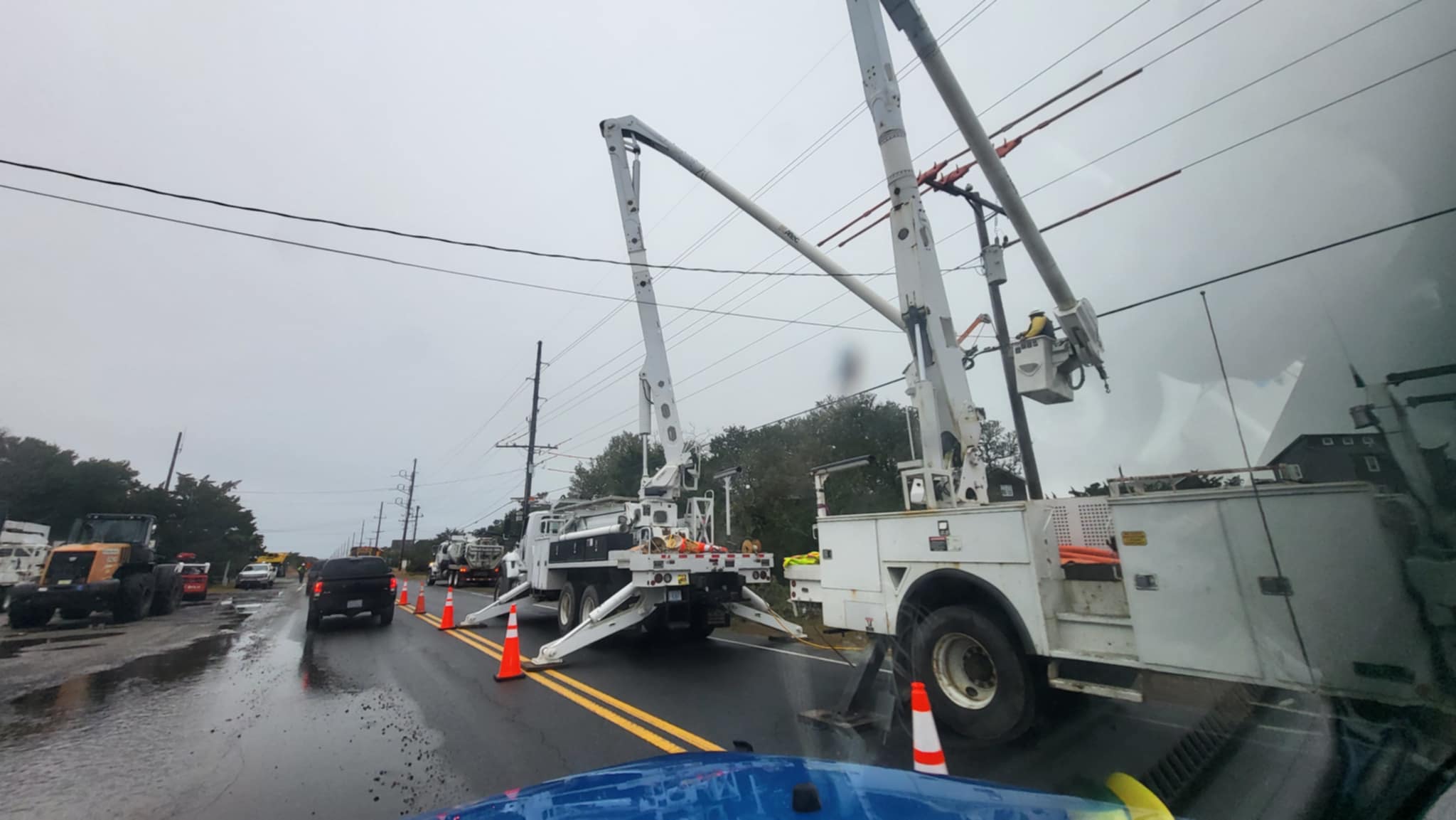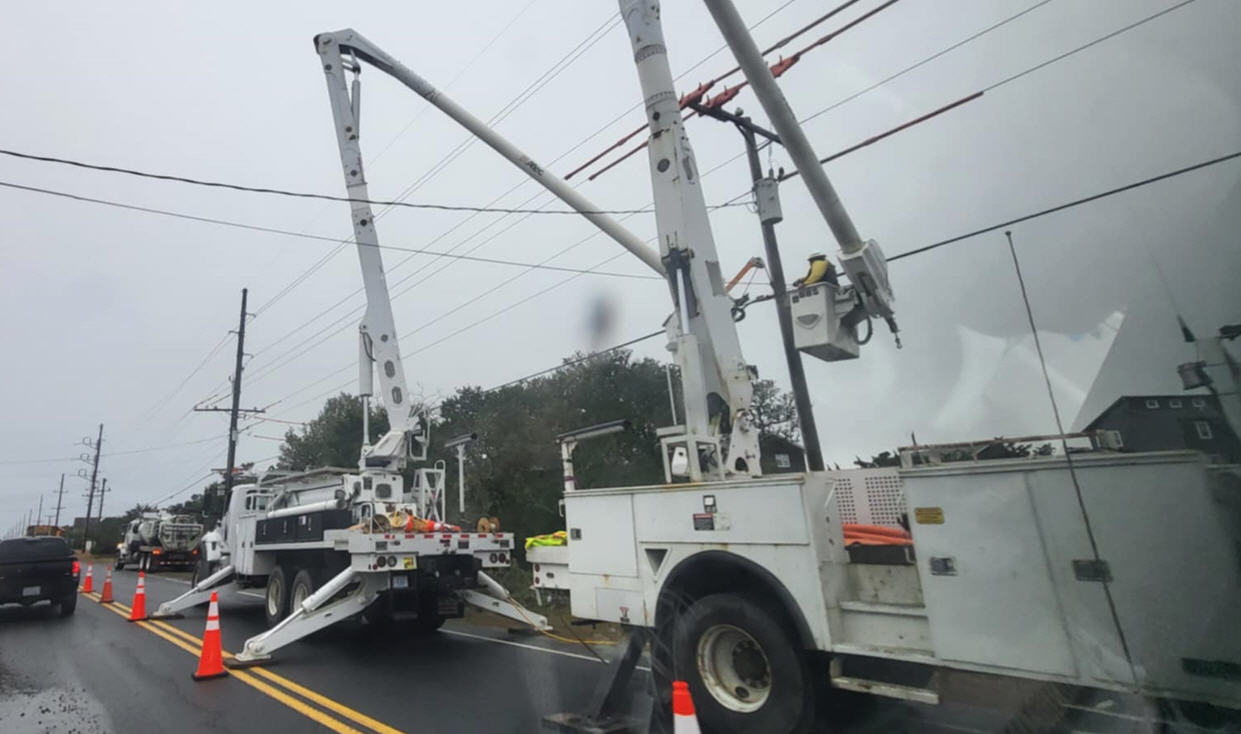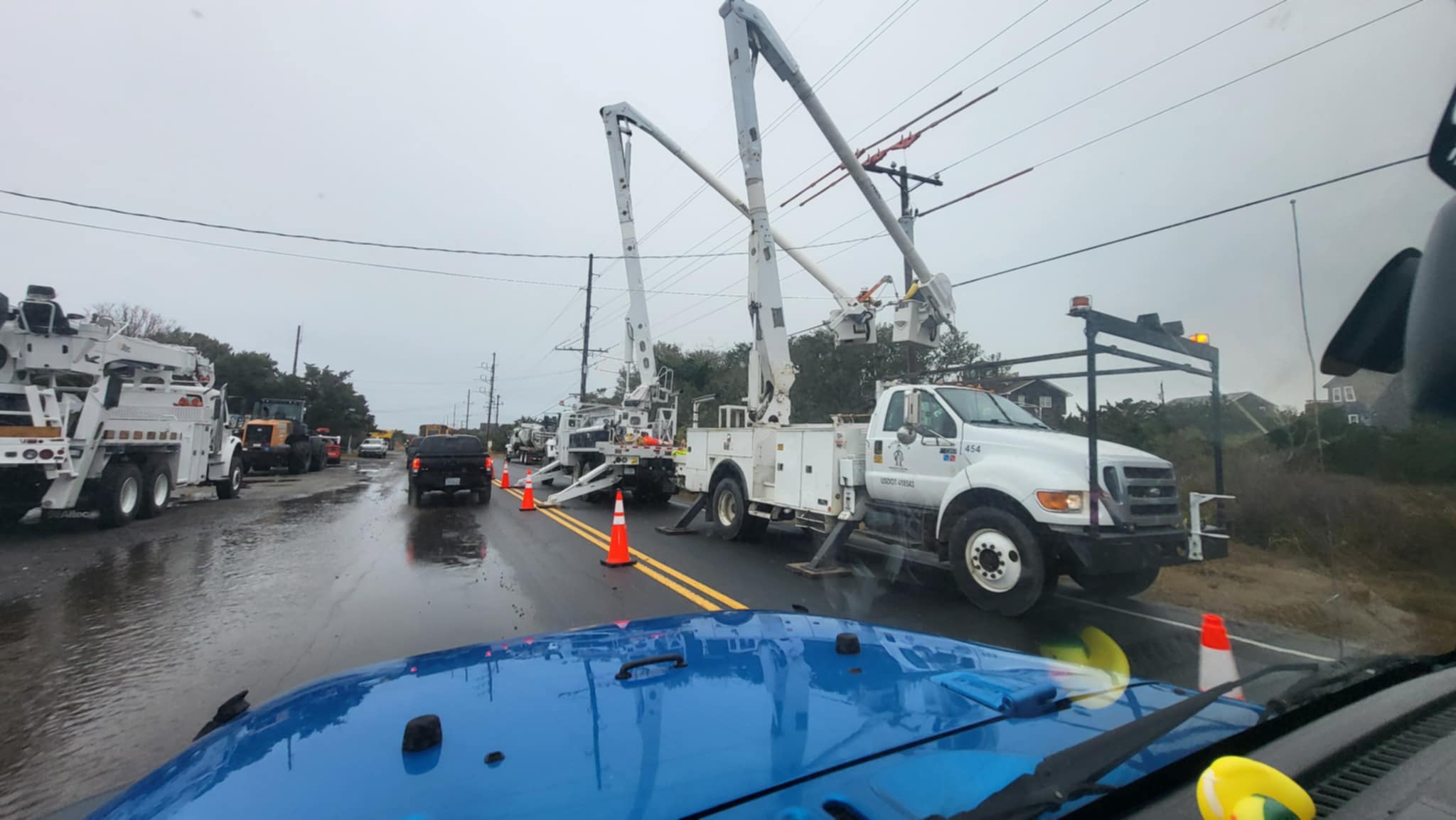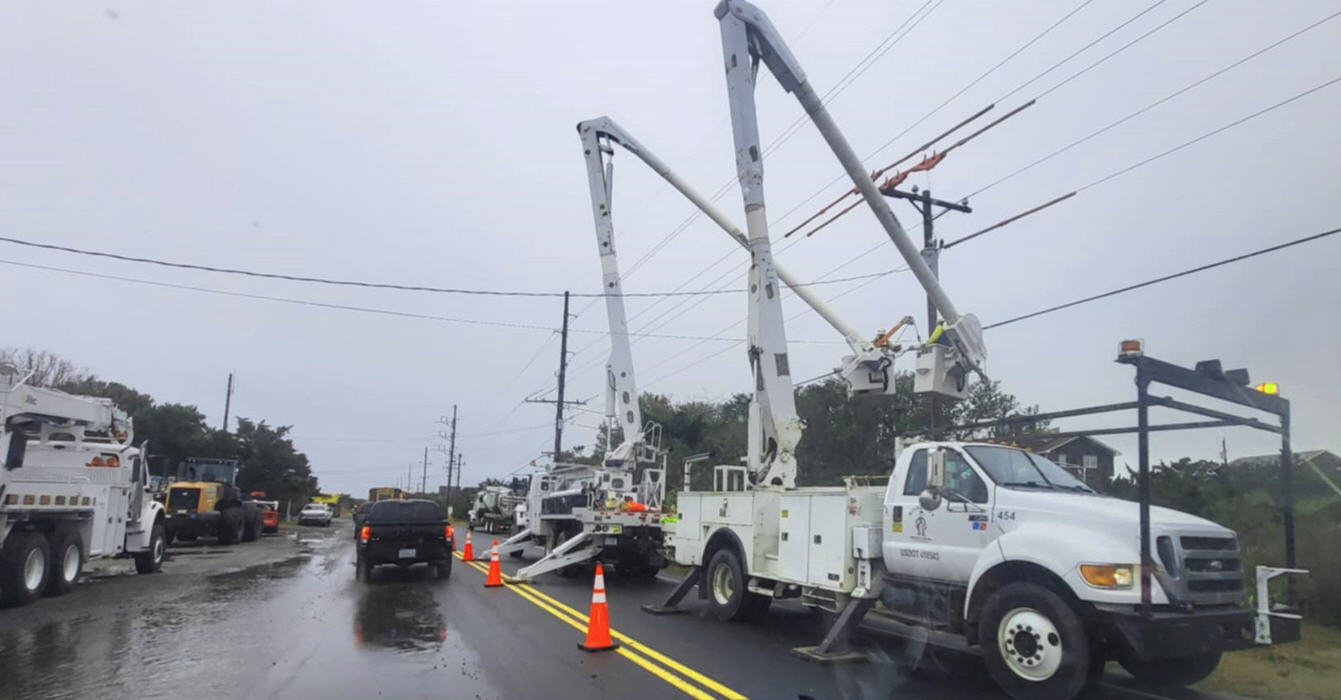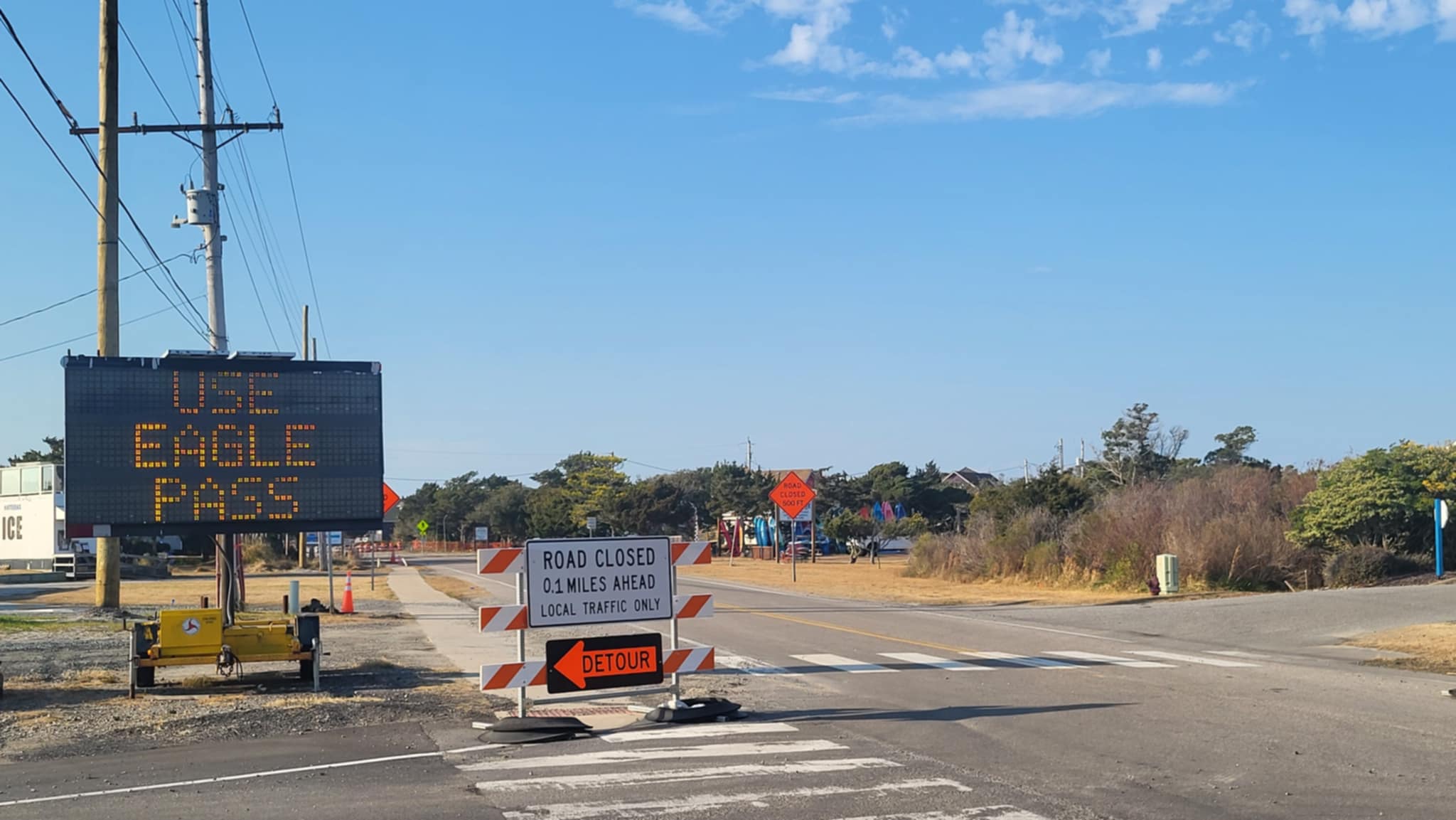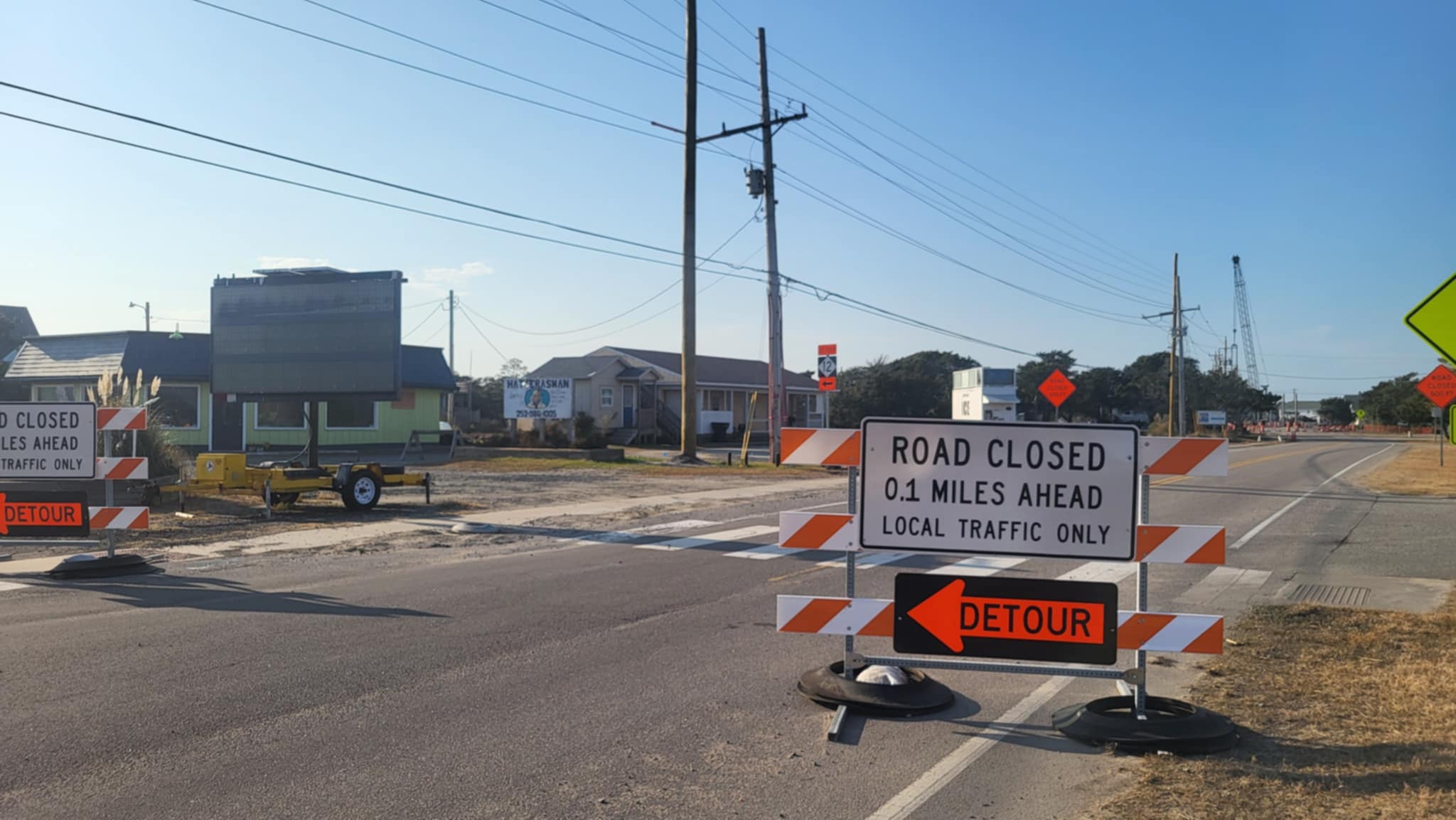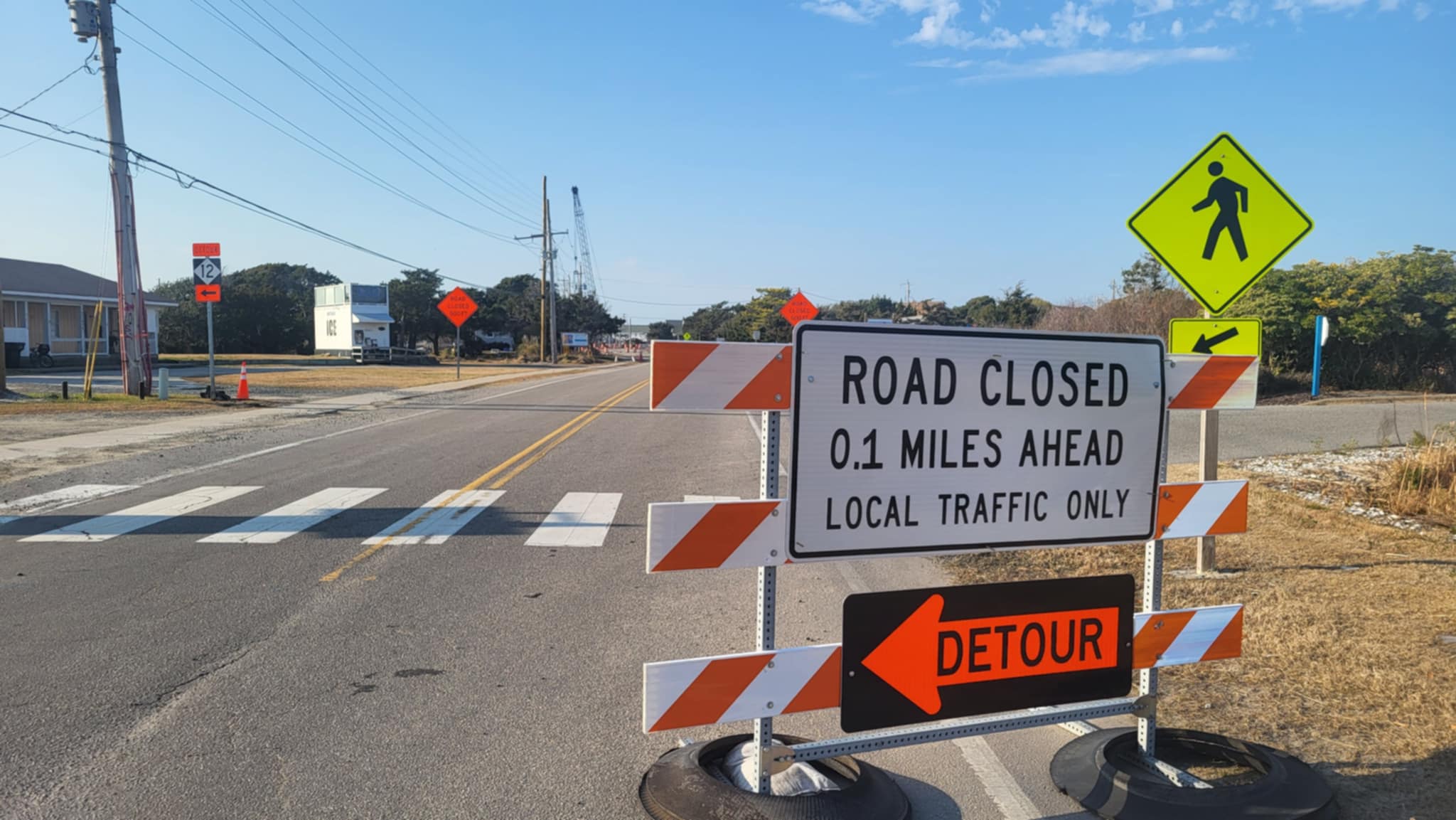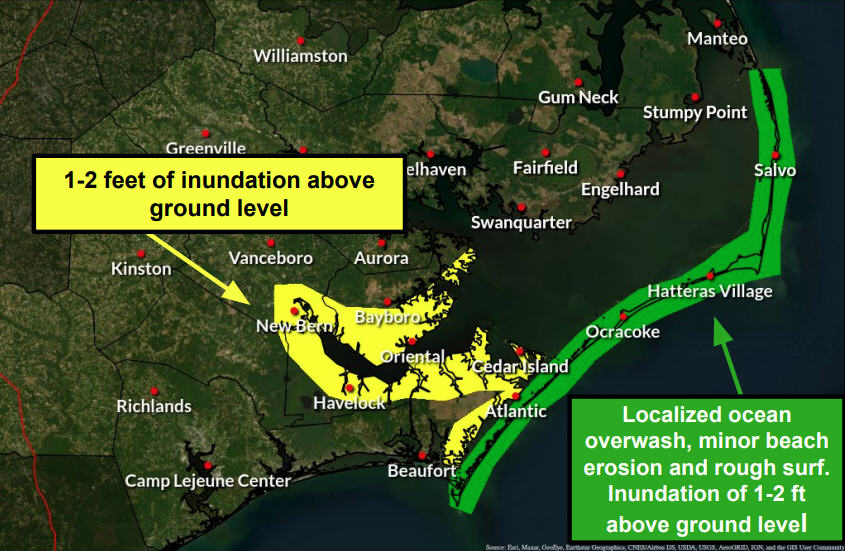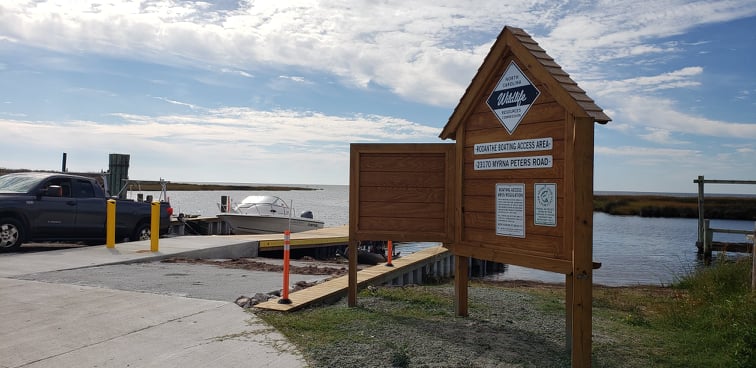Park Service establishes colonial waterbird pre-nesting areas
Park Service establishes colonial waterbird pre-nesting areas
National Park Service has installed pre-nesting areas for colonial waterbirds, as required by the new off-road vehicle management plan for the Cape Hatteras National Seashore.
The pre-nesting closure areas are based on the recent breeding history of the respective protected species at the seashore and the actual habitat conditions observed during the annual assessment.
The 2012 breeding habitat assessment and pre-nesting maps are posted on the NPS PEPC website under the Document List for the ORV Management Plan/EIS and Rulemaking project at: http://parkplanning.nps.gov/parkHome.cfm?parkID=358
Colonial waterbird pre-nesting areas have been installed at the following locations:
National Park Service has installed pre-nesting areas for colonial waterbirds, as required by the new off-road vehicle management plan for the Cape Hatteras National Seashore.
The pre-nesting closure areas are based on the recent breeding history of the respective protected species at the seashore and the actual habitat conditions observed during the annual assessment.
The 2012 breeding habitat assessment and pre-nesting maps are posted on the NPS PEPC website under the Document List for the ORV Management Plan/EIS and Rulemaking project at: http://parkplanning.nps.gov/parkHome.cfm?parkID=358
Colonial waterbird pre-nesting areas have been installed at the following locations:
National Park Service has installed pre-nesting areas for colonial waterbirds, as required by the new off-road vehicle management plan for the Cape Hatteras National Seashore.
The pre-nesting closure areas are based on the recent breeding history of the respective protected species at the seashore and the actual habitat conditions observed during the annual assessment.
The 2012 breeding habitat assessment and pre-nesting maps are posted on the NPS PEPC website under the Document List for the ORV Management Plan/EIS and Rulemaking project at: http://parkplanning.nps.gov/parkHome.cfm?parkID=358
Colonial waterbird pre-nesting areas have been installed at the following locations:
National Park Service has installed pre-nesting areas for colonial waterbirds, as required by the new off-road vehicle management plan for the Cape Hatteras National Seashore.
The pre-nesting closure areas are based on the recent breeding history of the respective protected species at the seashore and the actual habitat conditions observed during the annual assessment.
The 2012 breeding habitat assessment and pre-nesting maps are posted on the NPS PEPC website under the Document List for the ORV Management Plan/EIS and Rulemaking project at: http://parkplanning.nps.gov/parkHome.cfm?parkID=358
Colonial waterbird pre-nesting areas have been installed at the following locations:
Ramp 23 – Two colonial waterbird pre-nesting areas are located north and one south of the ramp. These are upper beach closures and the lower beach remains open to pedestrians, properly leashed dogs, and recreational uses until bird breeding activity is documented.
Ramp 23 – Two colonial waterbird pre-nesting areas are located north and one south of the ramp. These are upper beach closures and the lower beach remains open to pedestrians, properly leashed dogs, and recreational uses until bird breeding activity is documented.
Ramp 23 – Two colonial waterbird pre-nesting areas are located north and one south of the ramp. These are upper beach closures and the lower beach remains open to pedestrians, properly leashed dogs, and recreational uses until bird breeding activity is documented.
Ramp 23 – Two colonial waterbird pre-nesting areas are located north and one south of the ramp. These are upper beach closures and the lower beach remains open to pedestrians, properly leashed dogs, and recreational uses until bird breeding activity is documented.
1.0 to 1.2 miles north of Ramp 27 – There is restricted pedestrian access below the high tide line (no pets or kites allowed adjacent to the pre-nesting closure) until breeding activity is documented. The pre-nesting area is located within a designated ORV route. The prenesting area restricts ORV access approximately 1.0 mile north of Ramp 27.
1.0 to 1.2 miles north of Ramp 27 – There is restricted pedestrian access below the high tide line (no pets or kites allowed adjacent to the pre-nesting closure) until breeding activity is documented. The pre-nesting area is located within a designated ORV route. The prenesting area restricts ORV access approximately 1.0 mile north of Ramp 27.
1.0 to 1.2 miles north of Ramp 27 – There is restricted pedestrian access below the high tide line (no pets or kites allowed adjacent to the pre-nesting closure) until breeding activity is documented. The pre-nesting area is located within a designated ORV route. The prenesting area restricts ORV access approximately 1.0 mile north of Ramp 27.
1.0 to 1.2 miles north of Ramp 27 – There is restricted pedestrian access below the high tide line (no pets or kites allowed adjacent to the pre-nesting closure) until breeding activity is documented. The pre-nesting area is located within a designated ORV route. The prenesting area restricts ORV access approximately 1.0 mile north of Ramp 27.
0.05 to 0.2 miles north of Ramp 27 – The pre-nesting area is an upper beach closure. The lower beach remains open to ORV access, pedestrians, properly leashed dogs, and recreational uses until bird breeding activity is documented.
0.05 to 0.2 miles north of Ramp 27 – The pre-nesting area is an upper beach closure. The lower beach remains open to ORV access, pedestrians, properly leashed dogs, and recreational uses until bird breeding activity is documented.
0.05 to 0.2 miles north of Ramp 27 – The pre-nesting area is an upper beach closure. The lower beach remains open to ORV access, pedestrians, properly leashed dogs, and recreational uses until bird breeding activity is documented.
0.05 to 0.2 miles north of Ramp 27 – The pre-nesting area is an upper beach closure. The lower beach remains open to ORV access, pedestrians, properly leashed dogs, and recreational uses until bird breeding activity is documented.
Ramp 34 – Two colonial waterbird pre-nesting areas are located north and one south of the ramp. These are upper beach closures and the lower beach remains open to pedestrians, properly leashed dogs, and recreational uses. The ramp, boardwalk, and lower beach will remain open until breeding activity is documented.
Ramp 34 – Two colonial waterbird pre-nesting areas are located north and one south of the ramp. These are upper beach closures and the lower beach remains open to pedestrians, properly leashed dogs, and recreational uses. The ramp, boardwalk, and lower beach will remain open until breeding activity is documented.
Ramp 34 – Two colonial waterbird pre-nesting areas are located north and one south of the ramp. These are upper beach closures and the lower beach remains open to pedestrians, properly leashed dogs, and recreational uses. The ramp, boardwalk, and lower beach will remain open until breeding activity is documented.
Ramp 34 – Two colonial waterbird pre-nesting areas are located north and one south of the ramp. These are upper beach closures and the lower beach remains open to pedestrians, properly leashed dogs, and recreational uses. The ramp, boardwalk, and lower beach will remain open until breeding activity is documented.
Ramp 38 – Two pre-nesting areas are located south of Ramp 38. The first one, 0.9 to 1.3 south of Ramp 38, has restricted pedestrian access below the high tide line (no pets or kites) until breeding activity is documented. The second pre-nesting area, located 1.6 to 2.0 miles south of Ramp 38, has active American oystercatcher breeding activity and 0.4 miles of shoreline is closed to access.
Ramp 38 – Two pre-nesting areas are located south of Ramp 38. The first one, 0.9 to 1.3 south of Ramp 38, has restricted pedestrian access below the high tide line (no pets or kites) until breeding activity is documented. The second pre-nesting area, located 1.6 to 2.0 miles south of Ramp 38, has active American oystercatcher breeding activity and 0.4 miles of shoreline is closed to access.
Ramp 38 – Two pre-nesting areas are located south of Ramp 38. The first one, 0.9 to 1.3 south of Ramp 38, has restricted pedestrian access below the high tide line (no pets or kites) until breeding activity is documented. The second pre-nesting area, located 1.6 to 2.0 miles south of Ramp 38, has active American oystercatcher breeding activity and 0.4 miles of shoreline is closed to access.
Ramp 38 – Two pre-nesting areas are located south of Ramp 38. The first one, 0.9 to 1.3 south of Ramp 38, has restricted pedestrian access below the high tide line (no pets or kites) until breeding activity is documented. The second pre-nesting area, located 1.6 to 2.0 miles south of Ramp 38, has active American oystercatcher breeding activity and 0.4 miles of shoreline is closed to access.
South Beach (western end of piping plover/American oystercatcher pre-nesting area) – This adds approximately 0.3 mile to the west end of the existing pre-nesting area. Restricted pedestrian access (no pets or kites) will be below the high tide line until bird breeding activity is documented.
South Beach (western end of piping plover/American oystercatcher pre-nesting area) – This adds approximately 0.3 mile to the west end of the existing pre-nesting area. Restricted pedestrian access (no pets or kites) will be below the high tide line until bird breeding activity is documented.
South Beach (western end of piping plover/American oystercatcher pre-nesting area) – This adds approximately 0.3 mile to the west end of the existing pre-nesting area. Restricted pedestrian access (no pets or kites) will be below the high tide line until bird breeding activity is documented.
South Beach (western end of piping plover/American oystercatcher pre-nesting area) – This adds approximately 0.3 mile to the west end of the existing pre-nesting area. Restricted pedestrian access (no pets or kites) will be below the high tide line until bird breeding activity is documented.
Site-specific restrictions are posted at each location and on-site signage, rather than the Weekly Beach Access Summary or Google Earth map described below, is the most accurate and up-to-date indication of access status.
As a reminder, an ORV special use permit is required to use the designated ORV routes.
ORV permits are available at the following locations: Coquina Beach, the Cape Hatteras Lighthouse Visitor Center (Buxton), and the Ocracoke Visitor Center. The permit offices are open from 8 a.m. to 4:30 p.m., year-round, seven days a week, except Christmas Day, with expanded hours on weekends and holidays during the summer season.
The cost of an annual permit (valid for the calendar year) is $120. A seven-day ORV permit (valid from the date issued) costs $50. Failure to obtain a permit is a petty offense under Title 36 of the Code of Federal Regulations. Persons cited for violating the permit requirement have the option of paying the $150 fine by mail or appearing in U.S. District Court.
The Seashore’s interactive Google Earth map has been updated to reflect these changes. The map is available on-line at: http://www.nps.gov/caha/planyourvisit/googleearthmap.htm
Site-specific restrictions are posted at each location and on-site signage, rather than the Weekly Beach Access Summary or Google Earth map described below, is the most accurate and up-to-date indication of access status.
As a reminder, an ORV special use permit is required to use the designated ORV routes.
ORV permits are available at the following locations: Coquina Beach, the Cape Hatteras Lighthouse Visitor Center (Buxton), and the Ocracoke Visitor Center. The permit offices are open from 8 a.m. to 4:30 p.m., year-round, seven days a week, except Christmas Day, with expanded hours on weekends and holidays during the summer season.
The cost of an annual permit (valid for the calendar year) is $120. A seven-day ORV permit (valid from the date issued) costs $50. Failure to obtain a permit is a petty offense under Title 36 of the Code of Federal Regulations. Persons cited for violating the permit requirement have the option of paying the $150 fine by mail or appearing in U.S. District Court.
The Seashore’s interactive Google Earth map has been updated to reflect these changes. The map is available on-line at: http://www.nps.gov/caha/planyourvisit/googleearthmap.htm
Site-specific restrictions are posted at each location and on-site signage, rather than the Weekly Beach Access Summary or Google Earth map described below, is the most accurate and up-to-date indication of access status.
As a reminder, an ORV special use permit is required to use the designated ORV routes.
ORV permits are available at the following locations: Coquina Beach, the Cape Hatteras Lighthouse Visitor Center (Buxton), and the Ocracoke Visitor Center. The permit offices are open from 8 a.m. to 4:30 p.m., year-round, seven days a week, except Christmas Day, with expanded hours on weekends and holidays during the summer season.
The cost of an annual permit (valid for the calendar year) is $120. A seven-day ORV permit (valid from the date issued) costs $50. Failure to obtain a permit is a petty offense under Title 36 of the Code of Federal Regulations. Persons cited for violating the permit requirement have the option of paying the $150 fine by mail or appearing in U.S. District Court.
The Seashore’s interactive Google Earth map has been updated to reflect these changes. The map is available on-line at: http://www.nps.gov/caha/planyourvisit/googleearthmap.htm
Site-specific restrictions are posted at each location and on-site signage, rather than the Weekly Beach Access Summary or Google Earth map described below, is the most accurate and up-to-date indication of access status.
As a reminder, an ORV special use permit is required to use the designated ORV routes.
ORV permits are available at the following locations: Coquina Beach, the Cape Hatteras Lighthouse Visitor Center (Buxton), and the Ocracoke Visitor Center. The permit offices are open from 8 a.m. to 4:30 p.m., year-round, seven days a week, except Christmas Day, with expanded hours on weekends and holidays during the summer season.
The cost of an annual permit (valid for the calendar year) is $120. A seven-day ORV permit (valid from the date issued) costs $50. Failure to obtain a permit is a petty offense under Title 36 of the Code of Federal Regulations. Persons cited for violating the permit requirement have the option of paying the $150 fine by mail or appearing in U.S. District Court.
The Seashore’s interactive Google Earth map has been updated to reflect these changes. The map is available on-line at: http://www.nps.gov/caha/planyourvisit/googleearthmap.htm
Subject
Name
(required, will not be published)
(required, will not be published)
City :
State :
Your Comments:
May be posted on the Letters to the Editor page at the discretion of the editor.
May be posted on the Letters to the Editor page at the discretion of the editor.
May be posted on the Letters to the Editor page at the discretion of the editor.
May be posted on the Letters to the Editor page at the discretion of the editor.










